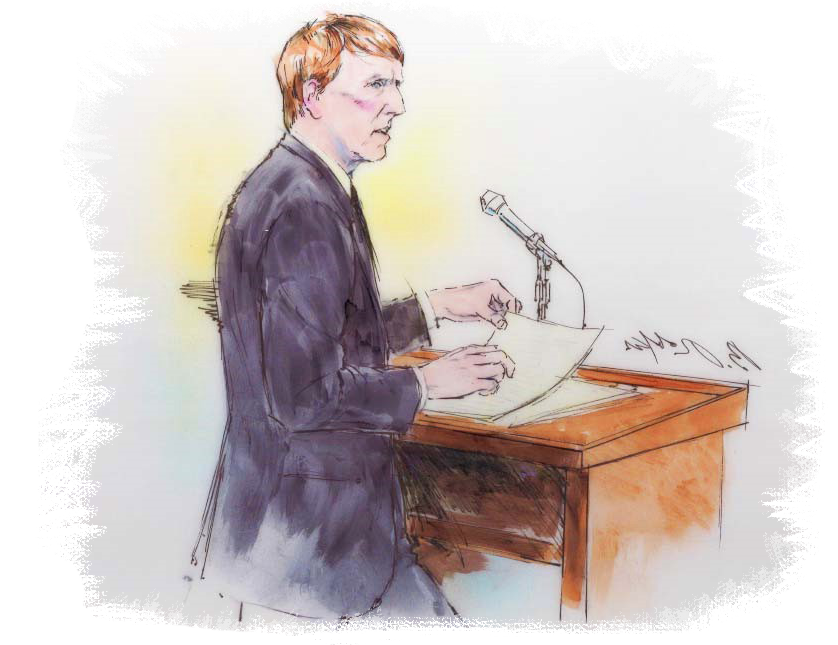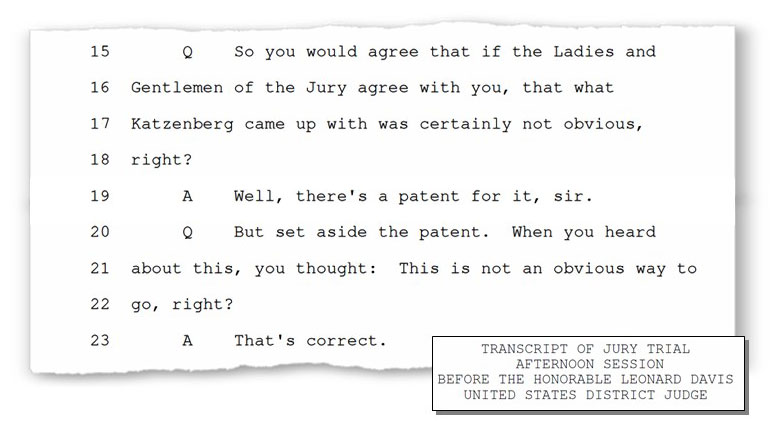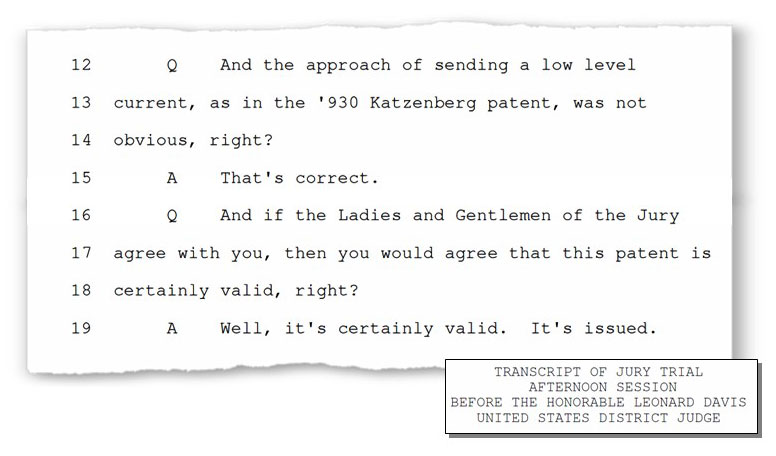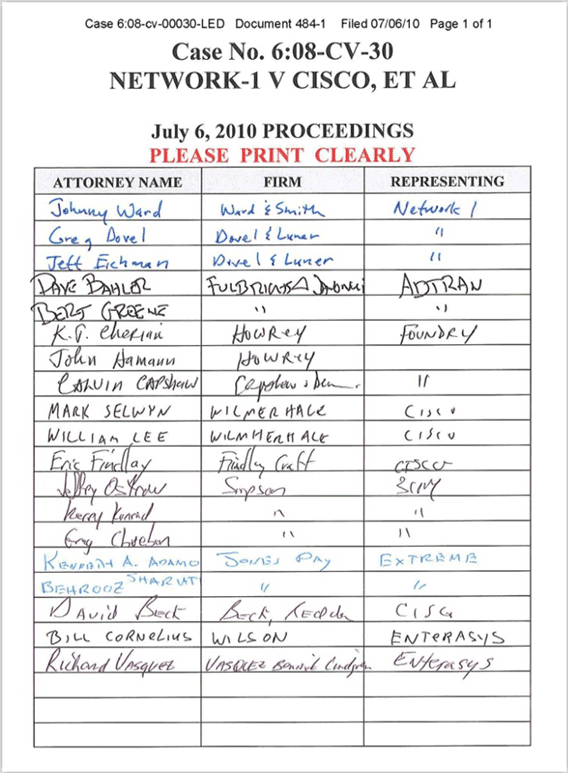Case Study 1
How we took on five BigLaw firms simultaneously—and won.
Clients and opponents sometimes question whether Dovel & Luner can succeed against a huge law firm with seemingly unlimited resources.
We do it routinely. Here is an example.

Greg Dovel—cross-examination
Dovel & Luner brought a complex patent infringement action against a group of Fortune 500 manufacturers of network switches. The Defendants hired five of the largest firms in the country and asserted a multitude of defenses.
As trial approached, only two key defenses remained:
- non-infringement: no infringement based on the absence of a “low level current” in the Defendants’ accused products;
- obviousness: our client’s patent was obvious based on an earlier patent developed by Cisco:

Joint Final Pretrial Order
Non-infringement defense
This defense hinged on the opinion of Defendants’ expert, Dr. Colwell. In deposition, we obtained admissions from Dr. Colwell that his analysis did not apply the Court’s rulings on how to properly interpret our client’s patent. Based on these admissions, we moved to exclude his opinions:
The Court ruled:

Court’s Order granting Plaintiff’s Daubert motion
The Court granted our motion:

Court’s Order granting Plaintiff’s Daubert motion
Key non-infringement defense: Gone.
Obviousness defense
The Defendants argued that our client’s patent (the Katzenberg ‘930 patent) was invalid because the invention was obvious when compared to another patent invented by a team from Cisco that included Dr. Karl Nakamura.
On the third day of trial, the Defendants called Dr. Nakamura to the stand to testify that his team came up with their idea first, and to show how similar his idea was to Katzenberg’s approach:

But then we cross-examined Dr. Nakamura. We demonstrated why his approach was actually very different from the approach in our client’s patent. Confronted with these differences, we forced Nakamura to admit that Katzenberg’s approach was not obvious and that our patent was valid— the exact opposite of what the Defendants wanted his testimony to prove:

… and that the Katzenberg patent was valid:

Key validity defense: Gone.
Result:
The case settled with all Defendants over the following two days:



